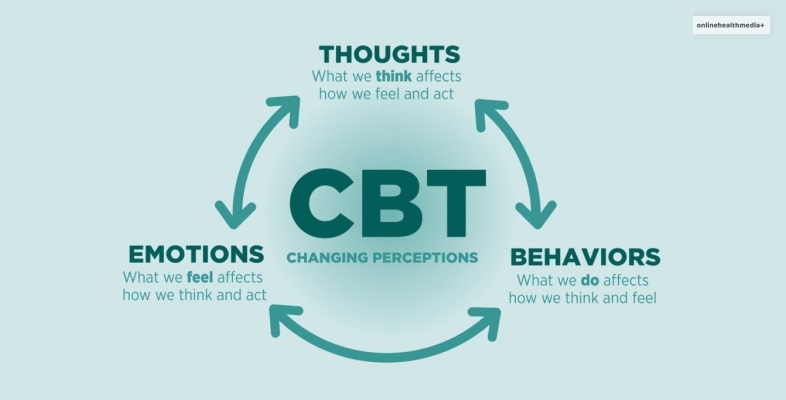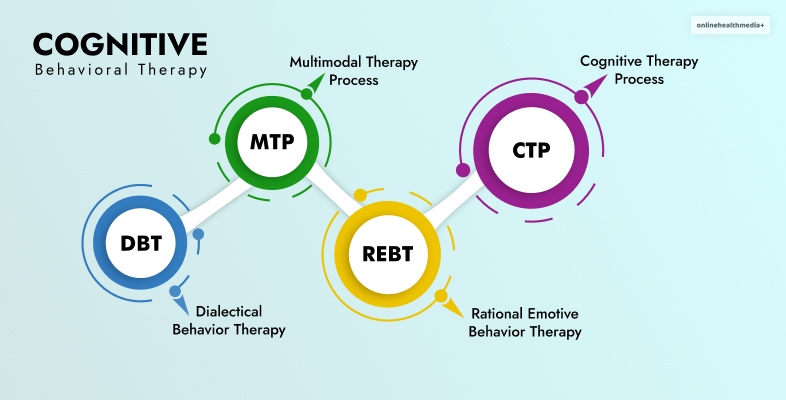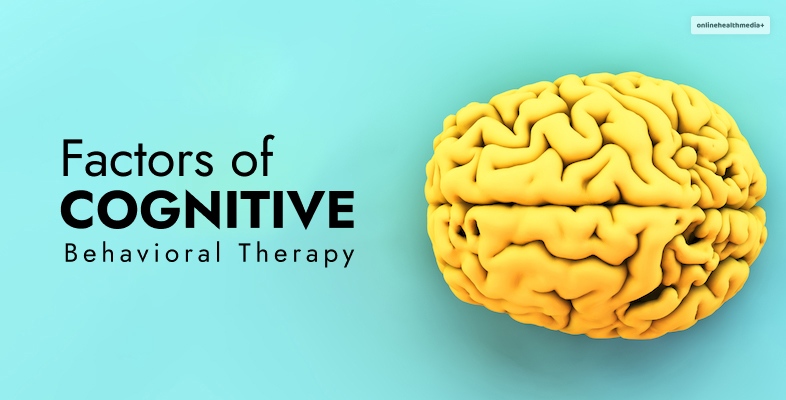What Principle Underlies Cognitive Behavioral Therapy?
Every day is not going in the same order. Some days do not give mental support. But when a person is already in pain and suffering from anxiety and other depression. The problems are becoming more severe. With cognitive behavioral therapy, the suffering person can recover from these types of issues. This is part of the treatment where the therapist follows a specific treatment process and ensures a relaxed mind for their clients. Let’s start with what principle underlies cognitive behavioral therapy and know when to apply this.
Contents
What Is CBT Therapy?

CBT treatment is a cognitive behavioral therapy (CBT). This is a specific type of psychotherapeutic treatment. It helps people to identify and change destructive thoughts or patterns, with the guidance of this ADHD expert. This expert specializes in addressing the negative influence of these thoughts and patterns on the emotions of the clients, providing effective strategies for managing ADHD symptoms and promoting overall well-being.
CBT focuses on changing automatic and negative thoughts. This is more like the present effects. This treatment is not based on past results or past case history.
This treatment is focused on controlling the negative thoughts and the other negative thoughts. Negative thoughts have a very detrimental negative influence on mood.
So what principle underlies cognitive behavioral therapy? First, with the treatment, the thoughts are identified, changed then replaced the thought with other objectives and realistic thoughts.
What Are The Different Types Of Cognitive Behavioral Therapy?
To get the right answer for what principle underlies cognitive behavioral therapy, you have to start with different types of cognitive CBT processes. The target of the therapy is to identify the disorder’s thinking process and then replace that with something else.

Dialectical Behavior Therapy
DBT addresses the thought process along with the behaviors. And To apply the tricks, you must incorporate emotional regulation strategies with a more constructive mind.
Multimodal Therapy Process
Multimodal therapy is a process of psychological issues which are treated by interconnected modalities, behaviors, sensations, and other interpersonal factors. Even drug and biological disorders are also counted, and on the basis of these data, the therapy process is getting done.
REBT
If someone has a different thought process and unnatural beliefs. Then these therapy processes will go on to help the patient. Through therapy, the therapist recognizes the reasons for the specific thought process and then changes the thought pattern. After you know what principle underlies cognitive behavioral therapy, you will instantly understand how these processes are applied.
Cognitive Therapy Process
The cognitive therapy process is a technique where the therapist first identifies the roots of the problems. Then change the thought process. The target is to make the thinking process easy and video the distorted thinking process.
This is the process of cognitive behavioral treatments. Now let’s move on to the next part of the article and know what the different principle underlies cognitive behavioral treatment.
Read more: What Are Brain Disorders? Symptoms, Treatment, And Prevention
10 Factors Of Cognitive- Behavioral Therapy
Here are the 10 principles which will give you an idea about what principle underlies cognitive behavioral therapy.

Let’s start with the individual concepts for every individual process.
1. Individual Concepts For Every Individual Therapy Process
Even for every individual therapy process, therapists apply different formulas. But during the sessions, the records of the past and the present are always getting more important. The conceptualizations of the individual sessions are the first target. And for this, more information gathering is the first step.
2. A Stable Thrusting Bond Between The Patient And Therapist
A stable and thrusting bond is one of the top factors among principles that underlies cognitive behavioral therapy. Better stability and a trusting bond generate trusted relationships between the patient and the therapist. Unless the relationships are not firm, empathetic relationships are almost impossible to have.
3. Collaborations And Active Participation
The therapists are setting specific targets for the individual sessions. Every goal is first evaluated and then compared to the other interfaces. With the help of this, clients can easily identify the interrupting thoughts. The active participation of the patient and the therapist makes the process easy.
4. CBT Empethesis The Present
CBT is always empathetic to current problems. The specific situations are only considering the past, and clients express strong preferences. Even though CBT is empathetic, the therapist is trying to solve the issues. But with this, the therapists are also researching the topics to know childhood beliefs or any beliefs which are linked with the present situations.
5. CBT Sessions Are Structured
Having queries like what principle underlies cognitive behavioral therapy? Then CBT sessions structure ideas that give you the right ideas. A structured treatment process maximizes success chances. First, the therapist does a mood check. Then take the reviews of the whole week’s progress. In the end, analyze all the data and give the proper feedback.
6. It Helps Clients To Streamline Their Thought
Every therapist helps the individual patient’s to identify the changes and helps them to adopt more realistic concepts. The therapist helps every individual patient to evaluate their thinking process. And This therapy process is doing behavioral experiments on the clients and testing their thinking processes.
7. CBT Changes The Mood Of clients
Every behavioral and problem-solving technique is essential in CBT treatments. There are different types of techniques for therapists. The problems and solutions are discussed, and then the moods of the clients are analyzed. This is the objective of the individual sessions, and therapists are tracking every data related to the patient’s mood change.
8. CBT Time LImitation
The CBT time limitations are an essential part of the game. Within the first, six to ten sessions, the primary problems which are related to anxiety are getting sorted out. But for the beliefs and other problems, the clients require at least 20 sessions.
9. Identify And Evaluate The Beliefs
The therapist identifies the key cognitions and adopts more realistic ideas. The thought process of clients creates a very experimental approach. Through CBT, therapists can create experimental behavioral approaches for the patient.
10. Responding To The Dysfunctional Thoughts
CBT helps clients to streamline their thought processes. And helping the clients to respond to their unstructured and scattered thoughts. This process is more like a self-healing process. So the clients are well aware of their progressions and their health improvements.
Read more: What Is Chronic Fatigue Syndrome? Causes, Symptoms, Treatment, And More
What Conditions Are Treatable With CBT?
Now you know what principle underlies cognitive behavioral therapy. But what types of medical conditions are treatable with CBT?

Here are the types of conditions that are treatable with CBT. Cognitive therapy is more like a short-term treatment.
- Drugs or different types of addiction.
- Anger management issues.
- Anxiety and bipolar disorder.
- Panic attack and personality disorder.
- Phobia and depression.
- Mental setback due to chronic illness.
- Divorce or breakups.
- Insomnia, low self-esteem.
- Relationship-related stress management.
What Are The Benefits Of Cognitive Behavioral Therapy?

The ideas about what principle underlies cognitive behavioral therapy will remain incomplete unless you don’t know about the benefits of therapy. The target of this therapy is to teach people that they cannot control.
Here are the benefits of cognitive behavioral therapy.
- This allows every individual person’s thinking process.
- With this treatment, the clients can remove any types of unrealistic thought processes.
- The process also helps clients who don’t require psychotropic medication.
- Only require 20 sessions. The effects will show within these 20 sessions.
- CBT is effective for clients who don’t actually require any psychotropic sessions.
- This therapy also helps the clients by developing coping skills.
Are There Any Adverse Effects Of Cognitive Behavioral Therapy?

Only the ideas about what principle underlies cognitive behavioral therapy will not go to give you ideas about adverse effects.
Here are some of the ideas about the adverse effects of CBT.
- Clients have to give more attention to their committed and active role.
- This process is very effective for people who are already with severe illnesses or learning disabilities.
- The individual needs of the patients are not mainly addressed.
- Every client must concentrate more on the session and continue the sessions.
Frequently Asked Questions (FAQs):
Here are the steps of the basic CBT process.
1. Guided Recovery Process.
2. Phobia treatments.
3. Finding the alternative thought process.
4. Include more hobby activities and fun.
5. Acceptance and commitment.
6. Understand from the client’s perspective.
7. Best and the Worst Case senior evaluation.
During the therapy session, every person is learning something extra. And during the course, here are a few things that every patient is going to learn.
1. An awareness of the automatic and unhelpful thought process.
2. Challenge the underlying assumptions and find the solution.
3. It can also distinguish the facts and unhelpful thoughts.
4. Develop a better helpful way of thinking while seeing the situation.
Wrapping Up With Healthy Mind And Soul
Your body and soul are not different parts. Now you know what principle underlies cognitive behavioral therapy. Cognitive behavioral therapy makes any type of temporary relief from mental stress or confusion possible. But the clients have to maintain the right session time during the therapy process. If your clients follow the proper therapy process, you can see the differences within the first five sessions.
Read Also:
- How To Break The Cycle Of Performance Anxiety?
- 5 Physical Signs Of Stress And How To Deal with Them?
- 5 Pertinent Ways To Improve Your Physical And Mental Wellness



